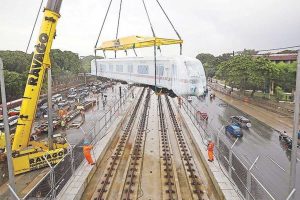Business
DOTr says current PUVs are ‘enough’

A month after the consolidation deadline, public utility vehicles (PUV) nationwide are sufficient to serve passengers, Transportation Secretary Jaime J. Bautista said during the 50th anniversary of the Maritime Industry Authority (MARINA).
“Overall, we have sufficient capacity. Yung mga nagconsolidate offers the required seats here in Metro Manila [Overall, we have enough capacity. Those who consolidated were enough to transport commuters in Metro Manila]”, he expressed.
He added that 80% of the operators and drivers who came together in the PUV Modernization Program (PUVMP) were already sufficient to transport commuters in Metro Manila and other cities.
Contrary to Mr. Bautista’s statements, Primo Morillo, president of the Passenger Forum, claimed in an interview last May 29 that there is a clear shortage of working PUVs.
“The government should allow more public utility vehicles on the road kasi kulang yung masasakyan ng mga commuters [The government should allow more public utility vehicles on the road because it cannot cover the number of commuters],” he claimed.
Apart from this, he also expressed concern over the government’s modernization program and how it is increasing pressure not only on the livelihoods of drivers and operators but also on commuters.
“Hindi has PUV modernization program for livelihood of mga drivers and mga operators…even commuters can improve their livelihood [Without consideration to the people’s livelihood, the PUVMP did not help drivers, operators, and even commuters. We already have a shortage of PUVs]” said Mr. Morillo.
According to Land Transportation Franchising and Regulatory Board (LTFRB) Chairman Teofilo E. Guadiz, 160,000 units have met the consolidation requirement of the PUVMP. Meanwhile, 10,000 unconsolidated jeepney units across the country are now considered colorum.
Arrested colorum jeepneys can face various penalties, such as a P50,000 fine for the operator, a one-year suspension for the driver, and 30 days of vehicle seizure in Pampanga, the LTFRB elaborated in their official statement of May 16th.
Rationalization of routes via LPTRP
Mr. Bautista further emphasized the need for the DOTr and LTFRB to work with local government units (LGUs) to rationalize routes through the Local Public Transport Route Plan (LPTRP).
“With the completion of this LPTRP, the company will become profitable in a sustainable manner and that would mean that we can invest in modern vehicles [With the finalization of LPTRP, we can ensure that the routes would be profitable and sustainable for our PUV drivers and operators to help them invest in modern vehicles,”] he explained.
As defined in the LPTRP Manual Part 1 in 2017LPTRP is a plan that describes the route network, mode and required number of units per mode for providing public land transport services. – Almira Louise S. Martinez











